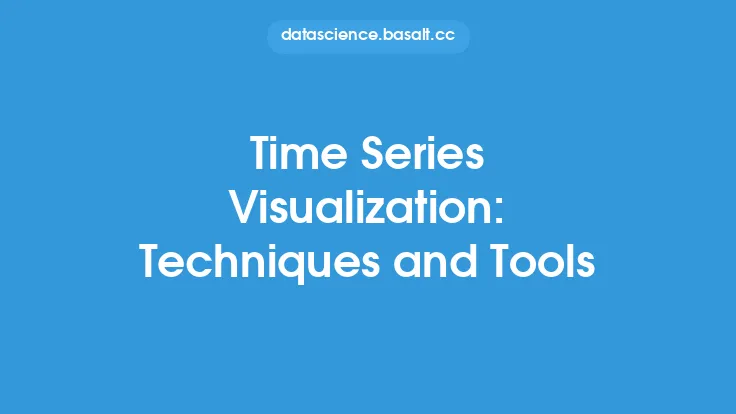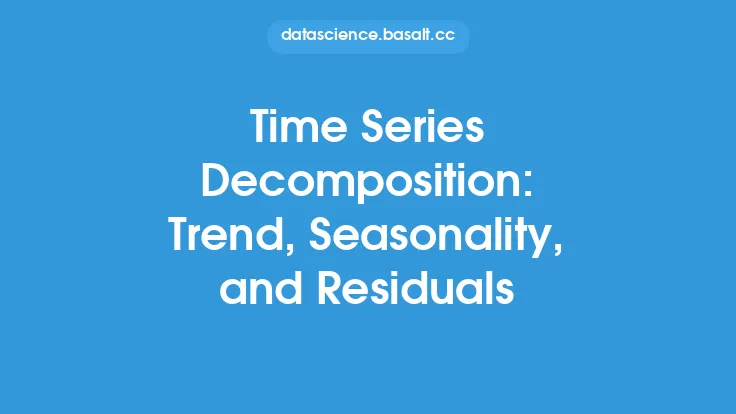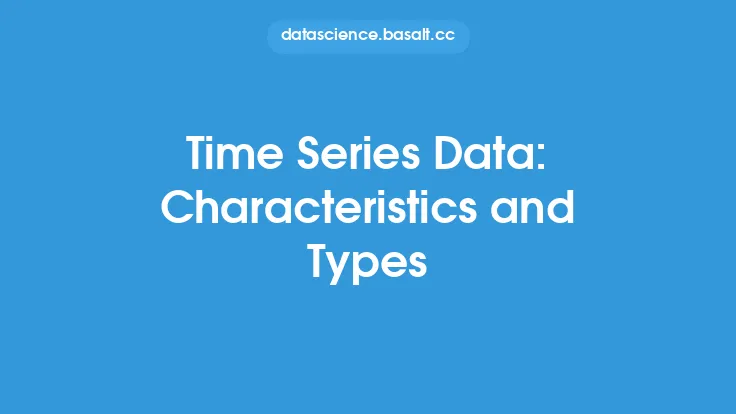Time series analysis is a crucial aspect of statistics, and understanding the dependencies within a time series is essential for making accurate predictions and informed decisions. Two fundamental concepts in time series analysis are autocorrelation and partial autocorrelation, which help identify and quantify the relationships between observations in a time series. In this article, we will delve into the world of autocorrelation and partial autocorrelation, exploring their definitions, calculations, and interpretations, as well as their applications in time series analysis.
Introduction to Autocorrelation
Autocorrelation, also known as serial correlation, refers to the correlation between a time series and lagged versions of itself. In other words, it measures the similarity between observations in a time series at different time lags. Autocorrelation is a crucial concept in time series analysis, as it helps identify patterns and relationships within the data. The autocorrelation function (ACF) is a graphical representation of the autocorrelation between a time series and its lagged versions, typically plotted against the time lag.
The autocorrelation coefficient, denoted by ρ(k), is calculated as the correlation between the time series and its k-th lagged version. The autocorrelation coefficient ranges from -1 to 1, where:
- ρ(k) = 1 indicates perfect positive correlation between the time series and its k-th lagged version.
- ρ(k) = -1 indicates perfect negative correlation between the time series and its k-th lagged version.
- ρ(k) = 0 indicates no correlation between the time series and its k-th lagged version.
Introduction to Partial Autocorrelation
Partial autocorrelation, on the other hand, measures the correlation between a time series and its k-th lagged version, while controlling for the effects of intermediate lags. In other words, partial autocorrelation assesses the direct relationship between a time series and its k-th lagged version, excluding the indirect effects of other lags. The partial autocorrelation function (PACF) is a graphical representation of the partial autocorrelation between a time series and its lagged versions, typically plotted against the time lag.
The partial autocorrelation coefficient, denoted by φ(k), is calculated as the correlation between the time series and its k-th lagged version, while controlling for the effects of intermediate lags. The partial autocorrelation coefficient also ranges from -1 to 1, with similar interpretations as the autocorrelation coefficient.
Calculating Autocorrelation and Partial Autocorrelation
Autocorrelation and partial autocorrelation can be calculated using various methods, including:
- The sample autocorrelation coefficient, which is calculated as the average of the product of the time series and its lagged versions, divided by the variance of the time series.
- The sample partial autocorrelation coefficient, which is calculated using a recursive formula that involves the sample autocorrelation coefficients.
In practice, autocorrelation and partial autocorrelation are often calculated using statistical software packages or programming languages, such as R or Python, which provide built-in functions for these calculations.
Interpreting Autocorrelation and Partial Autocorrelation
Interpreting autocorrelation and partial autocorrelation plots is crucial for understanding the dependencies within a time series. Here are some general guidelines for interpreting these plots:
- Autocorrelation plot:
+ A significant spike at a particular lag indicates a strong correlation between the time series and its lagged version at that lag.
+ A slow decay of the autocorrelation coefficients indicates a strong positive correlation between the time series and its lagged versions.
+ A rapid decay of the autocorrelation coefficients indicates a weak correlation between the time series and its lagged versions.
- Partial autocorrelation plot:
+ A significant spike at a particular lag indicates a direct relationship between the time series and its k-th lagged version, excluding the effects of intermediate lags.
+ A cut-off point in the partial autocorrelation plot indicates the order of the autoregressive (AR) process.
Applications of Autocorrelation and Partial Autocorrelation
Autocorrelation and partial autocorrelation have numerous applications in time series analysis, including:
- Identifying patterns and relationships within a time series
- Determining the order of an autoregressive (AR) process
- Selecting the appropriate model for time series forecasting
- Evaluating the performance of a time series model
- Identifying potential issues with a time series, such as non-stationarity or seasonality
Limitations and Challenges
While autocorrelation and partial autocorrelation are powerful tools for understanding time series dependencies, they also have some limitations and challenges, including:
- Autocorrelation and partial autocorrelation are sensitive to non-stationarity and seasonality in the data.
- Autocorrelation and partial autocorrelation plots can be difficult to interpret, especially for complex time series.
- The choice of lag length and the selection of the appropriate model can be challenging.
Conclusion
In conclusion, autocorrelation and partial autocorrelation are essential concepts in time series analysis, providing valuable insights into the dependencies within a time series. By understanding and interpreting autocorrelation and partial autocorrelation plots, practitioners can identify patterns and relationships, determine the order of an autoregressive process, and select the appropriate model for time series forecasting. While there are limitations and challenges associated with autocorrelation and partial autocorrelation, they remain fundamental tools in the field of time series analysis.





